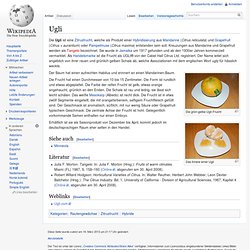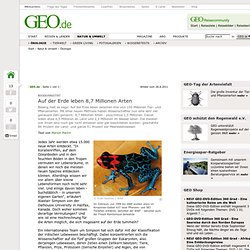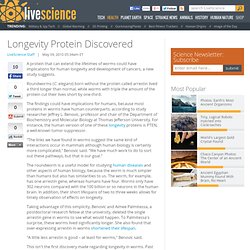

Skeleton.png (PNG Image, 1500x1200 pixels) Europe's biodiversity - biogeographical regions and seas — EEA. How the miracle fruit changes sour into sweet. Pop a “miracle berry” into your mouth, and you might wonder if it was named by an overreaching marketing department.

The small red fruit tastes of very little – it has a “mildly sweet tang… [like] a less flavorful cranberry”. But it’s not the taste of the fruit itself that matters. To understand why the berry gets its name, you need to eat something acidic. The berries have the ability to make sour foods taste deliciously sweet. Munch one, and you can swig vinegar like it was a milkshake, or bite lemons as if they were candy. The secret to the fruit’s taste-transforming powers is a protein called miraculin. Two groups of scientists independently isolated miraculin from miracle berries in 1968, but people have been experiencing its effects for far longer.
In the 1970s, an American company called Miralin tried to develop miraculin as a simple way of getting a sugar rush without having to gorge on cakes and sweets. According to Koizumi’s experiments, this explanation is not quite right. Animal Camera.
Ugli. Die Ugli ist eine Zitrusfrucht, welche als Produkt einer Hybridisierung aus Mandarine (Citrus reticulata) und Grapefruit (Citrus × aurantium) oder Pampelmuse (Citrus maxima) entstanden sein soll.

Kreuzungen aus Mandarine und Grapefruit werden als Tangelo bezeichnet. Sie wurde in Jamaika um 1917 gefunden und ab den 1930er Jahren kommerziell vermarktet. Als Handelsmarke ist die Frucht als UGLI® von der Cabel Hall Citrus Ltd. registriert. Der Name leitet sich angeblich von ihrer rauen und grünlich-gelben Schale ab, welche Assoziationen mit dem englischen Wort ugly für hässlich weckte. Die grün-gelbe Ugli-Frucht Das Innere einer Ugli. Auf der Erde leben 8,7 Millionen Arten. Hauptspalte: Artikel vom Bislang hieß es vage: Auf der Erde leben zwischen drei und 100 Millionen Tier- und Pflanzenarten.

Mit einer neuen Methode haben Wissenschaftler nun eine sehr viel genauere Zahl genannt: 8,7 Millionen Arten - plus/minus 1,3 Millionen. Davon sollen etwa 6,5 Millionen an Land und 2,3 Millionen im Wasser leben. Die meisten von ihnen sind noch gar nicht entdeckt oder gar beschrieben worden: geschätzte 86 Prozent der Land- und ganze 91 Prozent der Meereslebewesen Jedes Jahr werden etwa 15.000 neue Arten entdeckt.
Ein internationales Team um Simpson hat sich dafür mit der Klassifikation der irdischen Lebewesen beschäftigt. Dabei stießen sie auf eine Beziehung zwischen der Anzahl der groben Klassifikationen und der Anzahl der darunter versammelten Arten. "Die Zeitbombe des Aussterbens tickt für zahlreiche Arten immer lauter. Auch Robert May von der Oxford University hält diese Erkenntnisse für äußerst wichtig. Longevity Protein Discovered. A protein that can extend the lifetimes of worms could have implications for human longevity and development of cancers, a new study suggests.

Roundworms (C. elegans) born without the protien called arrestin lived a third longer than normal, while worms with triple the amount of the protein cut their lives short by one-third. The findings could have implications for humans, because most proteins in worms have human counterparts, according to study researcher Jeffrey L. Benovic, professor and chair of the Department of Biochemistry and Molecular Biology at Thomas Jefferson University. For instance, the human version of one of these longevity proteins is PTEN, a well-known tumor suppressor. "The links we have found in worms suggest the same kind of interactions occur in mammals although human biology is certainly more complicated," Benovic said.
"A little less arrestin is good – at least for worms," Benovic said. This isn't the first discovery made regarding longevity in worms. Biochemistry Online Book. Lab-made organ implanted for first time. Scientists created an artificial trachea using polymers that had a spongy and flexible texture.

In June, doctors implanted an artificial trachea into a 36-year-old manThe organ was created in a lab and bathed with the patient's stem cellsIt took away the need for the patient to wait for a donor organ (CNN) -- For the first time, a patient has received a synthetic windpipe that was created in a lab with the patient's own stem cells and without using human donor tissue, researchers said Thursday. Previous lab-generated transplants either used a segment of donor windpipe or involved tissue only, not an organ.
In a laboratory in London, scientists created a trachea, which is a tube-like airway that connects at the voice box and branches into both lungs. On June 9, doctors implanted this synthetic windpipe into a 36-year-old man with late-stage tracheal cancer at Karolinska University Hospital in Stockholm. Tracheal cancers are extremely rare, accounting for less than 1% of all cancers.
Drugs. Life as we didn't know it.